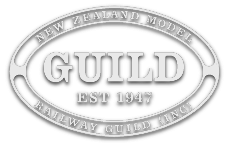
HOnz – HO scale, 12mm gauge New Zealand modelling
Group for modellers of New Zealand railways in 1:87 scale, using 12mm gauge track (HOnz, NZ87... View more
Miniatur Wunderland and HO scale (HOm and HOe)
-
Miniatur Wunderland and HO scale (HOm and HOe)
I’ve been in Europe for the past few weeks and managed to convince my wife to make a quick three-day trip to Hamburg in Germany. Hamburg alone is worth the trip, especially for the harbour tour or many other events, with a bit of elementary German (luckily I managed to remember a bit of what I learned in school!) you can get by pretty well, although most people do speak English.
I could do a whole write-up on Miniatur Wunderland and its popularity, plus the model-making ingenuity it has spawned. However that would be off-topic, so I thought I’d focus on something that I wasn’t expecting, which is also relevant to modelling NZR in HO scale – the mixing of gauges at Miniatur Wunderland but all in the same scale.
Most of the trains in Miniatur Wunderland are, naturally, built to 16.5mm gauge in 1:87 scale, which is the representation of standard gauge. But there’s a lot of narrow gauge present as well. The vast majority of which is in the Swiss section, and is HOm. HOm represents metre gauge (hence the “m”) of 1,000mm, slightly narrower than New Zealand’s 3 foot 6 inches (or 1067mm in proper measurements). HOm is 12mm, which again within coee of what 1067mm would be at 1:87 scale.
The Swiss section is massive, with narrow gauge trains traversing between two floors. In between the narrow gauge Swiss trains, mainline Swiss and other prototypes run on standard gauge tracks. The way they’ve integrated HOm and standard HO is almost seamless – there’s also significant dual-gauge track, which I think is produced by Tillig Bahn.
The Patagonia section is equally impressive. In this section they’ve used 9mm gauge, known in Europe as HOe (1:87 scale with 9mm gauge track). While this was smaller than the Swiss section, it was impressive and well done.
So what does this all mean for HOnz? I think it’s validation. While narrow gauge HO is unusual in our part of the world, it’s fairly common in Europe. While out exploring Hamburg we happened upon a model railway shop which was sadly closed. However, in the front of the shop were a number of Swiss prototypes in HOm, and HOe industrial locomotives, as well as standard HO and even some TT gauge (surprising as I thought that was more of an East German thing, but nonetheless it was there).
I think the mixing of gauges is part of the appeal of HOM and HOe in Europe. In New Zealand, this only really happened with some tram systems (Auckland and Christchurch), while the majority of bush tramways and street trams were built to NZR’s 3 foot 6 gauge. LIkewise in Australia the interplay between standard and narrow gauge (especially in Queensland and South Australia) means HOn3.5 has become popular – basically, you can run your standard gauge locos right next to narrow gauge ones and they’re the right scale. Which has got me thinking, maybe I’ll run a Christchurch or Auckland tram next to my (narrow gauge) mainlines…
I’ve created a playlist on YouTube of the Swiss section at Patagonia section, the two major narrow gauge parts –
Miniatur Wunderland – narrow gauge part 1 (youtube.com))
Log in to reply.

